
First Impressions
Surfing The Teal Tide
Setting the scene
I am a "cusp" rider. 5'10" on a real tall day, but more like 5'9" most of the time, 29.5" (750 mm) bb to saddle height, I fit smack in between medium and large on most sizing charts. For most of the past few decades, I have chosen the large option; I prefer stability over flickability, I have a bit more of a simian torso to leg ratio and the extra reach of the bigger bikes has given me more room to breathe. However, "The Slackening" of the past several years has seen the reach of bikes across the range grow dramatically concurrent with an industrywide acknowledgment that riding style might be more of a factor than inseam length when choosing a bike. Specialized has even binned the whole "small, medium, large" sizing matrix and moved toward a reach and wheelbase metric instead.
Further complicating my cuspness, my own ride preferences land me somewhere in between XC and all-mountain. I don't want to make my eyeballs bleed anymore, but I love lightweight, fast climbing bikes. I also love tires with actual tread on them and suspension that works. Once travel gets up above 150mm, I freely acknowledge that I am getting out of my comfort zone, but somewhere in that 120-150mm range is my sweet spot.
So, when the opportunity to test some new teal hardware from Yeti arose, I found myself torn. Go for speed and spend a summer bagging peaks on the new SB120? Or try to define the eternally elusive "quiver killer" with the more plushworthy SB140? After scrolling through the sizing charts and hemming and hawing for a few days, I pitched an idea to Yeti's new brand pimp and former bikemag alum Ryan Palmer; how about testing both? To my great surprise he said yes.

From a distance, they look almost identical. Same color, same component kits, same tires, same wheelbases. But the difference between the two bikes is very evident once they are in motion, and much more than skin deep.
Cut From The Same Cloth?
So, I ordered up an SB120 in the large size; it has 475mm of reach and a 1217mm wheelbase. And then I ordered an SB140 in medium; reach is 10mm less than the 120 at 465mm, but the wheelbase is the exact same 1217mm. Each bike got the same componentry: Yeti's T2 build kit for the 120 and T1 kit for the 140. The 140 comes with a Fox 36 Factory fork with a Fit4 damper and 150mm travel, whereas the 120 has a 34 Factory with a Grip2 damper and 130mm travel. Both bikes received an optional wheel upgrade; DT Swiss EXC1501 carbon hoops and 240 hubs, shod in each case with Maxxis Minion DHF 2.5" front and Aggressor 2.3" rear tires. The Yeti site lists the bike weights as 29.68 pounds for the 140 and 29.38 pounds for the 120, with the standard XM1700 wheels. My own Feedback hanging scale weighed these with XT pedals, the lighter upgrade wheels and 4oz of sealant per wheel at 30 pounds 3 ounces for the SB120 and 30 pounds 8 ounces for the SB140.
In each case we're looking at SRAM XO1 rear derailleurs, but the 120's T1 build gets a GX cassette whereas the T2 kit on the 140 has the swankier XO1 cassette. Brakes are the same on each: G2 RSC with 180mm rotors, although the SB140 gets bumped up front to a 200mm rotor. SRAM X1 Eagle cranks, Burgtec stems, Yeti house brand 780mm bars, Fox Transfer posts and WTB Silverado saddles with teal rails round out the contact points on each build.
Neither of these bikes would be considered inexpensive - 8,000 USD for the 140 and 7,600 USD for the 120, before factoring in the 1,000 wheel upgrade - but neither of them are up in the full dentist build stratosphere either. The 140 tops out at 10,400 USD for the LR T4 build, and the 120 reaches up to 12,100 USD for the T4XX Transmission model. It bears mentioning that versions of both bikes are available in the low $6k range, or 4,300-4,500 USD for frame only purchase.
Visually, there's not much to tell them apart. The 140 has a 36 on it, that is an obvious giveaway. Otherwise there's a longer stroke shock and a different upper link on the 140, and that bigger front rotor, but that's about it. The swingarms are near identical to my eye, as is the Switch Infinity double slider down by the bottom bracket.

Birds of a teal feather, flocking together...

Notably longer stroke on the 140's Fox DPS

As well as a longer upper shock mount and different upper link.

Compared to the shorter, more tucked in 120 upper link...

34 and 36 forks, one with a GRIP2 damper, one with a FIT4, but probably not in the order you might think. The 130mm travel 34 gets the GRIP2, while the 150mm 36 is rolling the FIT4.
The Why Of It
The fact that these two bikes are so similar in so many regards - right down to tires and wheels and wheelbase - is exactly why I chose to have them delivered this way. I find myself bouncing from one rail of these tracks to the other so much with my own bike builds - going from shorter travel and lighter spec to more cush and beefier componentry and then inevitably either adding weight and strength to the lighter setup or trying to trim fat from the burlier bike - that sometimes I feel like I'm caught in a mountain biking version of the movie Groundhog Day, only I don't keep dying. I am really looking forward to spending the time going back to back on two bikes where the variables are so few as to be almost non-existent in the hopes that I may gain some clarity into my own biases. Am I really just an incorrigible old XC burnout, or would I, like so many other people, be better served with more travel and more capability in more terrain?
The 140 has a degree slacker head angle and a degree steeper seat angle, and, being a medium, an almost negligible 10mm less reach when compared to the 120. But is 10mm really negligible when we're diving into geometry pedantry? Only one way to find out; ride the damn things.

The tale of the tape, times two. SB140 here, remember, I'm testing the medium...

And the SB120 here, size large being the tester...
This is going to be a summer long project, and I don't want to say anything about this as a review until I have enough hours on each bike to know for sure what I am feeling. For now, the only flies in the ointment are that I kinda wish the Fox 36 on the SB140 had a GRIP2 damper, and that the 120 maybe weighed a couple pounds less. I mean, it's allegedly an XC bike, albeit one with "proper" tires. But still, 30-ish pounds is a bit porky for a bike with this sorta focus. But wait!
Once upon the dawn of time (1989, I think?), I began my indentured servitude in the bike industry with the purchase of a Yeti FRO. I bought that bike from Velo City in San Francisco, with the agreement being that I could pay it off over time so long as I took a job there and learned to be a bike mechanic.
That FRO was heavy, black, steel, TIG welded from straight gauge Patco 4130 tubing, and my first ride on it was a life changer. Ready to race, that old lump of steel weighed smack on 30 pounds (admittedly with a Brooks saddle, but hey, we all got our quirks), so I really shouldn't complain about a bike with all this suspension and functional brakes weighing the same.
Anyway, that thing got hammered for years, broke a couple times, got welded back together each time, was converted into a single speed for a while, then about a decade later ended up being handed off to a friend who was getting into mountain biking. I think I spotted it rolling along West Cliff Drive in Santa Cruz a couple years ago, some 32 years old, with a baby seat on it, still ticking.
Swinging back toward the present day reality, my relatively recent encounters with Yeti's Switch Infinity suspension have been almost entirely positive - it is super plush, ramps nicely, and decouples pedal inputs from suspension action as efficiently as the very best of the DW-link and VPP and other dual-short-link designs out there. But I haven't ever really ridden it in a shortish, XC-oriented package, and am curious to see how it behaves in this realm. I also have never really spent a lot of hours aboard the platform, and I am eyeballing those two little Kashima coated sliders with a certain degree of suspicion.
Ahhhh, memories... I'm looking forward to getting some time on these new abominable snowmen.

Nice to see you again, you fuzzy old freak.
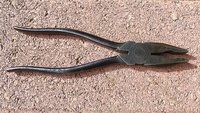






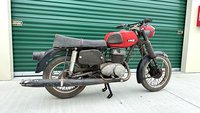
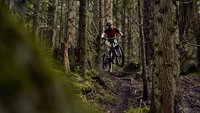
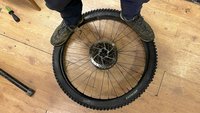
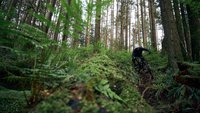
Comments
Vik Banerjee
11 months, 3 weeks ago
"Neither of these bikes would be considered inexpensive - 8,000 USD for the 140 and 7,600 USD for the 120, before factoring in the 1,000 wheel upgrade - but neither of them are up in the full dentist build stratosphere either."
We call those Hygienist Builds. They hurt you and there is a bit of bleeding, but you don't leave any body parts behind when the sales transaction is complete. You can park them next to a Dentist Bike without shame and as long as they don't actually touch you haven't committed a faux pas.
Have fun with the review.
Reply
earle.b
11 months, 3 weeks ago
This will be an interesting one. I've long held the opinion that if the low travel version is the same weight as the longer travel version you might as well ride the longer travel. Will be interesting to hear your feedback.
Reply
Vik Banerjee
11 months, 3 weeks ago
I used to think that, but now I have the opposite opinion. Partially because I've stopped caring about bike weight [within a reasonable range] and partially because I found I enjoy the ride feel of less suspension/no suspension better.
To come at it another way I'm really trying to maximize fun and at least for me fun doesn't increase with more suspension or less weight [again within a reasonable range].
All that said I wouldn't argue with someone who wanted the more travel option.
Reply
Christian Stevens
11 months, 3 weeks ago
This comment has been removed.
Perry Schebel
11 months, 3 weeks ago
it's an interesting discourse. i've got a couple shock / clevis setups that allow me to oscillate between 140 & 160mm travel without affecting geometry (on a modern / aggressive geometry platform). each has their strengths, but currently trending towards the shorter travel for it's slightly better pop / playfulness (ie, fun factor). for racing and/or epic big chunk days, i'd certainly go long for reduced fatigue & larger margin for error.
Reply
Lynx .
11 months, 3 weeks ago
What bike is that again Perry? I can tell you from my perspective on (besides different tubesets) the massive difference in how my 2 Banshee's feel compared to one another, geo is identical setup with stock fork lengths. Setup stock with a 130mm fork, the Phantom is so much more of a playful/poppy bike, whereas the Prime feels like a tank, just point and go where you want, especially exaggerated if I run say 2.5"> tyres, the thing can get you into some serious trouble with the amount of confidence it gives.
The Phantom over forked is still way more playful than the Prime, but it's "what it can hit" does increase with the extra 20mm travel how I run it, but still have to be cognoscente of the only 105mm of travel out back - thinking sometimes I should have gone for the 190mm shock over the stock 184 when I recently replaced the shock to take it to just around 120mm travel.
Reply
69tr6r
11 months, 3 weeks ago
@Lynx, I have the 190mm shock, a Manitou McLeod, and the Phantom absolutely rips in this mode. I went a step further and turned it into a mini Spitfire by running 27.5 wheels front and rear. I also went crazy and swapped the 29er Fox34 for a 27.5 Fox 36 (travel at 170mm!) and the geo is basically the same as a stock Phantom 29er. Such a fun bike!
Reply
Lynx .
11 months, 3 weeks ago
@69tr6r sounds like a fun bike indeed. What size frame/how tall are you? How big rubber have you gone with the 650B? I'm not an anything but 29er guy, unless they're almost 29", i.e. 650B+ and I've run Schwalbe NN 650Bx2.8" on mine and it definitely upped it's game even further, major monster truck vibes, turns it a bit into almost a Prime of not really needing to pick lines, almost.
Also not a fan of the low BB, like my chunky tech trails, especially slower ones and low BBs suck there big time. Have you measured the BB height? Going by the avg 650B wheel height, I'd guess that you've lost about 3/4" in BB height compared to stock running 29ers.
Reply
69tr6r
11 months, 3 weeks ago
I'm 5'10" and ride a Version 2 Medium frame. I'm running 2.6" tires. Last I remember, the BB was about 13.25" in the high/steep mode. We have chunky trails here too, and I agree the higher BB is better. Head angle measures about 68, which some would have you believe is totally unrideable, lol. I think it's great!
Lynx .
11 months, 3 weeks ago
Oh come on man, you absolutely know that a 68* HTA is just too damn steep to ride anything but flat trails man, get with the program (tongue firmly planted in cheek).
My pre-production V1 (think geo is a tad slacker as didn't have final fixturing) with how it's setup now running a F34 @150mm, runs I think about 66.5-67* in the mid geo setting and it's plenty slack enough for the steepest things, only thing holding this bike back is me. Used to run it in the step setting with a 140mm Trace and the 68ish HTA was plenty fine, just slacked it out because my 9point8 FallLine dropper with setback head, seals are gone, so on a straight post and don't like such a steep STA.
I've also been running it with my Schwalbe 29x2.6" NN/HD setup because, well, they're my newest tyres at about 6 years old and total wheelset weight is lower than my 29x2.3" Agressor/DHF wheelset by about 150g and the combo also seems to roll faster than the Maxxis combo and they add another level to how hard you can charge this thing.
earle.b
11 months, 3 weeks ago
Have you compared setting the 160mm at firmer vs the 140mm at softer. How does the same bike same geo feel at 30% sag in 140 vs 25% sat in 160. Or are you running 30% sag in 160 and 25% sag in 140 to create a bigger delta? Again all done at the same weight and geo, shocks air vs air and not muddled with long travel coil and short travel air.
Reply
fartymarty
11 months, 3 weeks ago
For me (and local trails) 140mm rear travel is the sweet spot. I wouldn't want more or less with a 150/160 fork. Geo the key as my XL Murmur is loooong and slack enough to do everything I can ride.
Reply
Brian Tuulos
11 months, 3 weeks ago
Sizing bikes by wheelbase is an approach more people should take. The dimensional extents of both axles plays a big role in your size comfort zone. In my experience, Short travel, steeper bikes you can size up easier.
Reply
Lu Kz
11 months, 3 weeks ago
Shout-out for brands giving us reasonable seat tube lengths and standovers which make playing around with sizes far more feasible than it has ever been in the past.
Reply
fartymarty
11 months, 3 weeks ago
Agreed. WB is the sum of a lot of things and gives you a broad idea of what the bike can do.
Reply
Velocipedestrian
11 months, 3 weeks ago
Listing "bb to saddle height" rather than inseam speaks to someone with Preferances when it comes to pedals and crank length.
I look forward to the shake out.
Reply
taprider
11 months, 3 weeks ago
How often do you need to know your (or friend's or customer's) inseam?
But you will likely need to know "bb to saddle height" many times a year (month, week) to set up a new bike or repair/replace a seat post or saddle.
I have no idea what my inseam is, but know my "bb to saddle height" as well as my birth date.
Reply
BadNudes
11 months, 3 weeks ago
This comment has been removed.
Lynx .
11 months, 3 weeks ago
@Taprider - and that's with what length cranks again, since you seem to be assuming everyone runs the same length? I know my inseam, BB to Saddle height, measurement where the back of my saddle intersects the CS to BB, preferred Reach but more importantly the measurement from BB to outside centre of grips.
Reply
taprider
11 months, 3 weeks ago
But do you know your inseam? that is the point
other mtn bike media commonly write about inseam length and not BB to Saddle height.
That is why I like Mike's point of view (and writing) in that I can instantly relate to it.
Reply
Lynx .
11 months, 3 weeks ago
I take both your points and agree, but like I said, god to know both because lots of variables.
As I said, yes I do know my inseam, it's 35.25", my preferred BB to Saddle is around 32.25-32.5" depending on which bike, what length cranks (175 or 180mm), what pedals, what shoes, what shorts. My RAD (which to me is very important) as I measure it (center of BB to outside center of bar) is around 36". My Reach range is 450-485mmish, all depending on what length stem, width bar, sweep bar and the use for the bike, also the Stack, which for me is around 435-440mm including spacers if needed.
As an example I have 3 main bikes, rigid commuter, rigid Trail and FS Trail. The rigid commuter an '08 Monkey has a 750mm wide bar & 90mm stem, Reach is somewhere in the 420mm range I think, but RAD is just under 36", which is great for road riding/commuting as it pulls me down a bit, bit more aero. The rigid Trail bike, an '18 Unit has a 480mm/16 degree sweep bar & 50mm stem, 484mm Reach and the RAD is a touch over 36". The FS Trail bike, a Phantom has a 480mm/9 degree sweep bar & 60mm stem, 450mm Reach and the RAD again is a smidge over 36". WB on those bikes are right around 47" on the Unit and Phantom and the Monkey has a 44" WB.
Reply
Velocipedestrian
11 months, 3 weeks ago
>that's with what length cranks again, since you seem to be assuming everyone runs the same length?
And pedal thickness... Mike just strikes me as a rider who knows exactly how long the cranks will always be, and sticks to a preferred pedal.
Reply
Kos
11 months, 3 weeks ago
Sounds like a fun project that will probably have a surprise conclusion or two. Looking forward to that.
"The 140 comes with a Fox 36 Factory fork with a Fit4 damper and 150mm travel, whereas the 120 has a 34 Factory with a Grip2 damper and 130mm travel."
Seems backwards? IMO, the 120 should have the Fit4 damper and the 140 should have the Grip2.
Reply
Graham Mattingly
11 months, 3 weeks ago
I thought the same thing about those dampers, though I imagine the bikes will still be able to answer the underlying question by the end of the summer.
Feels reminiscent of a Covid spec choice, and I wonder how intentional that was.
Reply
Sweaman2
11 months, 3 weeks ago
No discussion of stack? My personal bug bear currently (having T-Rex arms) is that as reach goes up stack doesn't seem to by anywhere near as much so whilst I'm now likely a medium for reach the front is too low. And yes, I could fix that with a high riser bar (and potentially a lot of spacers if the manufacturer hasn't cut the fork too short) but aesthetics....
Reply
roil
11 months, 3 weeks ago
I think stack doesn’t grow proportionately with reach for aesthetic reasons. I run a ton of spacers and high rise bars. It has totally transformed my bike.
Reply
itsky21
11 months, 3 weeks ago
I am super interested in following along with this test. Where is the 120/140 more fun than the other? Where is the 120/140 faster than the other?
Reply
Lynx .
11 months, 3 weeks ago
Looking forward to this one for sure Mike, like you I'd be very curious how much different they may feel or maybe more similar than different. Friend has an SB150 w/ Fox 38 and I know that thing pedals quite well, but it's a monster truck and will plow over anything, lines are more of a guideline than rule with that bike.
You mention your BB to Saddle height, which is a good one to know along with preferred crank length and most manufacturers list both a actual and virtual STA angle, but what most forget is at what height that angle is measured at, which make s a WORLD of difference. Banshee I know for sure do it and maybe 1 or 2 others that I know of, but wish more would so the info could be of actual use.
Reply
Chad K
11 months, 3 weeks ago
I'm also very curious as to the shakedown between the bikes.
I'm about to change local trails (Virginia/Maryland to Dallas, Texas) and have been thinking similar thoughts to what my bike of choice might be. Around here I'm usually on an enduro sled (sb160) if I'm doing bigger elevation days but my closest trails really only call for a short travel bike (pivot 429 trail). That said, I could have also split the difference and kept riding my sb130LR in both places without any major issues.
Reply
KavuRider
11 months, 3 weeks ago
I will always have a soft spot for Yetis (owned 2, an SB5c and an SB165) but the switch infinity was too much of a PITA for maintenance for me. Maybe I had bad ones, but I had to constantly re-grease them. And the SB165 had a zerk fitting behind the swingarm, so you had to pull the whole thing to do it.
I will admit, the suspension design felt great on the trail!
Reply
Dave Smith
11 months, 3 weeks ago
Very curious about the 140mm and the one bike for all idea.
How did that Large size up? Yeti sizing seems off at the moment. I'm 6'1" and threw my leg over an XL SB 160 with a 35mm stem at my local shop expecting to get my usual click and felt like I had to size up to a XXL.
Reply
Ripbro
11 months, 3 weeks ago
I’ve heard nothing but great things about the 140. Like a better Ripmo on the way up and down. Will be interested to hear your thoughts.
My wife is on a SB100 and either of these could be her next bike.
Reply
Nukeitfromorbit
11 months, 3 weeks ago
Are you selling your pea gravel?
Reply
Mike Ferrentino
11 months, 3 weeks ago
The pea gravel is for sale! Only catch is that you have to buy all of it, and it comes with a couple buildings and 85 acres of the finest poison oak that money can buy. As such, it seems a bit expensive compared to most regular pea gravel...
Reply
Nukeitfromorbit
11 months, 3 weeks ago
Looks like an amazing property! Sorry to hear that. Hope you have another oak patch lined up! It is going bonkers this year from the rain. Love seeing slices of the very reclusive ventana in your pieces✌️
Reply
finbarr
11 months, 3 weeks ago
This might be a silly question, but if the weight is the same, wouldn’t you strictly prefer the components on the 140 (geometry aside)? Why would you ever want a 34 when you can have a 36 other than the lower weight?
Reply
Lu Kz
11 months, 3 weeks ago
34s do flex more, but it's not always the bad thing enduro marketing types make it out to be. If the type of riding, travel bracket, terrain, speed, etc. mean you aren't going to push a 34 to the point where there's an undesirable level level of twisting and flex of the stanchions, a 34 might actually feel better.
I have a factory GRIP2 36 and 34, there's no setup I can do to the 36 that make it more plush than the 34 at comparable settings. I've ran them both at 140mm for quite some time.
There's something to be said about total system stiffness that gets overlooked. I've opined on this at length previously in other comments, but for a general trail bike, I like the 34 on a stiffer frame and the 36 on the less-stiff platform for a similar experience front to back. Obviously, when the speed, technical terrain, and travel goes up, it's 36 all day.
Reply
finbarr
11 months, 3 weeks ago
oh, that's interesting. thank you for that insight. that totally makes sense.
Reply
XXX_er
11 months, 3 weeks ago
120 vs 140 seems way too close to be of much point but have fun
I liked the switch infinity when i had it on a 5.5, no problems with it maintenance wise
carbon paste on the seat post or it will squeak
I drove a large 5.5 for the trail test but bought medium which was just right ( 5'8") the cockpit of the large was definatly too long, now on a medium SC also just right
Reply
Lynx .
11 months, 3 weeks ago
One other comment no one else has mentioned, but I think is worth talking about is the shock spec on these bikes. For the price and also for how these bikes will be ridden nowadays compared to how this sort of category would have been years ago, I think they both should have come with a min reservoir shock like the FloatX. Having that extra room for oil and damping makes a big difference, more so even on the shorter travel bike and makes it feel like it has more than stated, IMHO, and this is how a shorter travel bike in the <130mm range can still be a great all rounder.
Reply
fartymarty
11 months, 3 weeks ago
This is going to be an interesting experiment.
I'm going to stick my neck on the line and predict that Mike will like the 140 over the 120. My argument is that they are so damn similar geo wise and with some air pressure / damping tweaks the 140 will behave like the 120. Therefore why have less when you can have more.
Does this then extrapolate up to 160mm travel...
Reply
Lynx .
11 months, 3 weeks ago
I'm going to throw my hat in the ring and say the complete opposite, I think you can more easily push the 120 towards feeling like the 140, more than tweaking the 140 to try and get it like the 120. It will definitely be interesting to see what the outcome is, especially since they're less than a 1/2lb weight difference.
Reply
Grant Blankenship
11 months, 3 weeks ago
Seem like very fancy Stumpjumpers. Like the McLaren to the Stumpjumper Vette.
Reply
Please log in to leave a comment.